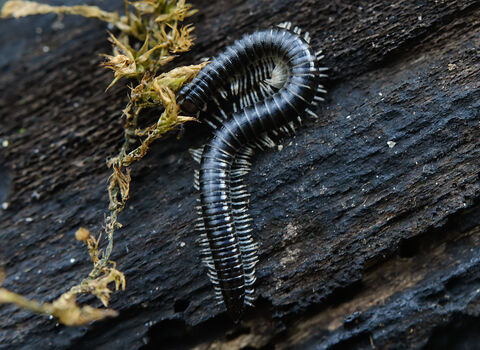
White-legged Snake Millipede ©northeastwildlife.co.uk
White-legged snake millipede
Found in compost heaps and under stones in gardens, the White-legged snake millipede is a common minibeast. Despite its name, it has about 100 legs. It is an important recycler of nutrients, feeding on decaying matter.
